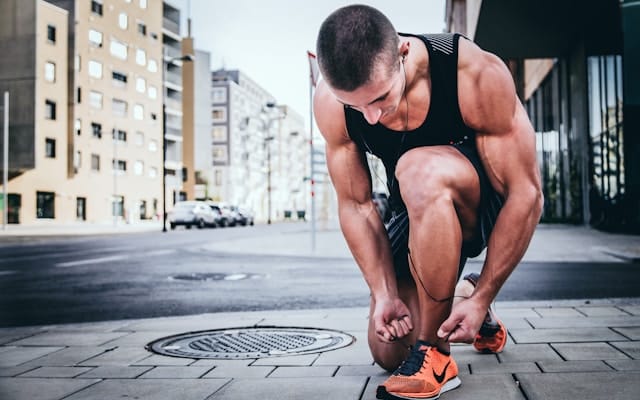Competitive bodybuilding is a demanding sport that requires physical strength, mental toughness, and strategic planning. This article explores the various aspects of training like a professional bodybuilder, from developing a training plan to preparing for competition day.
The Basics of Competitive Bodybuilding
Competitive bodybuilding is more than just lifting weights. It involves sculpting the body to showcase muscle size, symmetry, and definition. There are different categories and divisions, including men’s and women’s bodybuilding, physique, figure, bikini, and classic physique. Each category has its own set of rules and judging criteria, emphasizing different aspects of muscular development and aesthetics.
Understanding these rules and criteria is crucial for success. Judges look for overall muscle mass, balance between different muscle groups, conditioning (low body fat levels), and the ability to present the physique effectively through posing.
Developing a Pro-Level Training Plan
A personalized training plan is essential for reaching the pro level. This plan should include:
Resistance Training
Resistance training is the cornerstone of bodybuilding. It involves lifting weights to build muscle mass and strength. A typical pro-level regimen includes compound movements (e.g., squats, deadlifts, bench presses) and isolation exercises (e.g., bicep curls, leg extensions) to target specific muscles.
Cardiovascular Training
Cardio helps maintain cardiovascular health and aids in fat loss, crucial for achieving the lean, defined look required in competitions. Professional bodybuilders often include steady-state and high-intensity interval training (HIIT) in their routines.
Flexibility and Mobility Exercises
Maintaining flexibility and mobility is important for preventing injuries and improving overall performance. Stretching, yoga, and mobility drills are integral to a bodybuilder’s training regimen.
Periodization and Progression
Periodization involves dividing the training program into phases, each with specific goals, such as building muscle mass (hypertrophy) or cutting fat (cutting phase). Progression ensures continuous improvement by gradually increasing workouts’ intensity, volume, or complexity.
Nutrition and Supplementation
Nutrition plays a critical role in bodybuilding. Proper diet supports muscle growth, recovery, and overall health.
Macronutrient and Micronutrient Requirements
Bodybuilders need a balanced intake of macronutrients—proteins, carbohydrates, and fats. Proteins are essential for muscle repair and growth, carbs provide energy, and fats support hormone production and overall health. Micronutrients, such as vitamins and minerals, are also vital for optimal bodily functions.
Meal Timing and Frequency
Consuming meals at regular intervals helps maintain energy levels and supports muscle growth. Many bodybuilders eat 5-6 smaller meals throughout the day to keep their metabolism active and ensure a steady supply of nutrients.
Bodybuilding Supplements
Supplements can enhance performance and recovery. Common supplements include protein powders, branched-chain amino acids (BCAAs), creatine, and pre-workout formulas. Additionally, post-competition recovery often includes protocols like using Nolvadex for PCT to help restore hormonal balance and maintain gains. It is important to choose high-quality products and use them as part of a balanced diet.
Hydration
Proper hydration is crucial for performance and recovery. Drinking adequate water helps maintain muscle function, supports digestion, and aids in the transport of nutrients.
Recovery and Injury Prevention
Rest and recovery are as important as training itself.
Techniques for Muscle Recovery
Professional bodybuilders use recovery techniques, including foam rolling, massage therapy, and cryotherapy, to reduce muscle soreness and speed up recovery.
Injury Prevention Strategies
Preventing injuries involves proper warm-up and cool-down routines, maintaining good form during exercises, and listening to the body to avoid overtraining.
Managing Common Bodybuilding Injuries
Injuries are part of the sport. Common issues include muscle strains, joint pain, and tendonitis. Managing these injuries with rest, physical therapy, and training modifications is essential for long-term success.
Mental Preparation and Focus
Mental toughness is crucial in competitive bodybuilding.
Overcoming Mental Challenges
The mental demands of bodybuilding include staying motivated, handling competition stress, and maintaining discipline in training and diet.
Techniques for Focus and Motivation
Setting clear goals, visualizing success, and using positive reinforcement are effective techniques. Many bodybuilders also practice mindfulness and meditation to stay focused and calm.
Dealing with Competition Anxiety
Competition anxiety is common. Preparing mentally involves practicing posing routines, familiarizing oneself with the competition environment, and developing a pre-competition routine to stay calm and focused.
Posing and Presentation
Posing is a vital part of bodybuilding competitions.
- Mastering Mandatory Poses: Competitors must perfect mandatory poses like the front double biceps, side chest, and back lat spread. Each pose showcases different muscle groups and requires precise technique.
- Developing a Posing Routine: A well-choreographed posing routine highlights a competitor’s strengths and personality. Regular practice and feedback from experienced coaches can make a significant difference.
- Presentation Skills: Confidence and stage presence are key. Professional bodybuilders work on their presentation skills to look relaxed and confident on stage.
The Final Weeks: Pre-Competition Prep
The weeks leading up to a competition are crucial.
- Diet and Training Adjustments: Diet adjustments, including carb cycling and manipulating water intake, help achieve peak conditioning. Training intensity may decrease slightly to allow for recovery.
- Peak Week Strategies: Peak week involves specific strategies to enhance muscle definition and fullness. Techniques such as carb loading, sodium manipulation, and strategic hydration are commonly used.
- Rest and Recovery: Adequate rest is essential during the final week to ensure the body is fully recovered and ready for competition.
Conclusion
Training like a pro in competitive bodybuilding requires dedication, discipline, and strategic planning. From rigorous training and precise nutrition to mental preparation and competition-day logistics, every aspect plays a crucial role in achieving success. Whether you’re an aspiring bodybuilder or a fitness enthusiast, understanding these elements can help you reach your full potential in the sport.




Comments are closed.